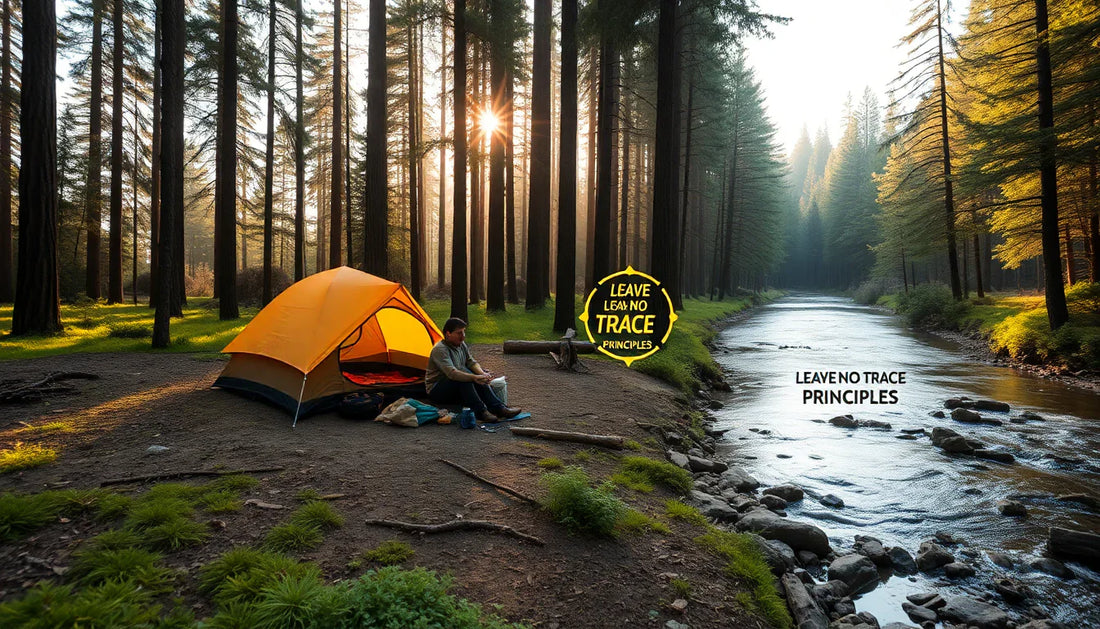
Leave No Trace Camping: How to Minimize Your Impact on Nature
Share
As avid outdoor enthusiasts, we at GlowCamp believe that the beauty and serenity of nature should be preserved for generations to come. That's why we're committed to promoting sustainable camping practices that align with the principles of Leave No Trace. In this blog post, we'll explore how you can minimize your impact on the environment and enjoy the great outdoors responsibly.
Understanding Leave No Trace
Leave No Trace is a set of ethical guidelines that aim to protect natural spaces by encouraging responsible outdoor recreation. These seven core principles serve as a framework for campers, hikers, and adventurers to tread lightly and leave the land as they found it.
- Plan Ahead and Prepare: Thorough planning and preparation can help you anticipate potential environmental challenges and mitigate your impact.
- Travel and Camp on Durable Surfaces: Stick to established trails and campsites to avoid damaging fragile ecosystems.
- Dispose of Waste Properly: Pack out all your trash, including food scraps and human waste, to prevent pollution.
- Leave What You Find: Resist the temptation to collect natural souvenirs, as this can disrupt the delicate balance of the environment.
- Minimize Campfire Impacts: Use existing fire rings or stoves, and ensure your campfire is completely extinguished before leaving.
- Respect Wildlife: Observe animals from a distance and avoid feeding them, as this can alter their natural behaviors.
- Be Considerate of Other Visitors: Practice courtesy and respect towards fellow outdoor enthusiasts to maintain a harmonious experience for all.
By embracing these principles, you can ensure that the natural spaces you visit remain pristine and accessible for future generations to enjoy.
Practical Tips for Minimizing Camping Impact
Implementing Leave No Trace principles into your camping routine can be easier than you might think. Here are some practical tips to help you reduce your environmental footprint:
Proper Waste Management
Proper waste management is crucial when camping. Always pack out all your trash, including food scraps, packaging, and even toilet paper. Consider using a portable toilet system or digging a cat hole (at least 6 inches deep and 200 feet from water sources) for human waste. Never bury or burn your trash, as this can harm the local ecosystem.
Selecting Sustainable Camping Sites
When choosing a campsite, look for established sites that show signs of previous use. Avoid setting up camp on delicate vegetation or near water sources, as this can disrupt the natural environment. If possible, use a camping stove instead of building a campfire, as this reduces the risk of wildfire and minimizes your impact on the land.
Responsible Campfire Practices
If you do decide to build a campfire, be sure to use an existing fire ring or clear a small, circular area of bare soil. Gather only dead, fallen wood and extinguish the fire completely before leaving. Never leave a campfire unattended, and be mindful of local fire restrictions or bans.
Protecting Wildlife and Vegetation
Observe wildlife from a distance and avoid approaching or feeding them, as this can disrupt their natural behaviors. When hiking or exploring, stay on designated trails and avoid trampling on fragile plants or disturbing the soil. If you must venture off-trail, do so carefully and minimize your impact.
Eco-Friendly Camping Gear and Practices
Choosing the right camping gear and adopting sustainable practices can also play a significant role in minimizing your environmental impact. At GlowCamp, we curate a selection of functional, eco-friendly camping equipment designed to help you enjoy the outdoors responsibly.
Look for lightweight, durable gear made from recycled or sustainable materials. Opt for reusable water bottles, biodegradable soap, and camping stoves that use renewable fuel sources. When packing, consider the weight and volume of your gear to reduce the overall impact of your camping trip.
Planning and Preparation
Proper planning and preparation are key to ensuring a successful and environmentally-conscious camping experience. Before your trip, research the area you'll be visiting, including any local regulations or restrictions. Familiarize yourself with the Leave No Trace principles and plan your activities accordingly.
Consider the potential impact of your campsite selection, route, and group size. Avoid sensitive areas, such as wetlands or fragile ecosystems, and aim to disperse your group to minimize the concentration of use in any one location.
Personal Responsibility and Environmental Stewardship
Ultimately, the responsibility for preserving our natural spaces lies with each individual who ventures into the great outdoors. By embracing the principles of Leave No Trace and adopting sustainable camping practices, you can play a vital role in protecting the environment and ensuring that these precious landscapes remain pristine for generations to come.
As outdoor enthusiasts, we have a unique opportunity to inspire a culture of environmental respect and responsible recreation. By sharing our knowledge, leading by example, and encouraging others to follow suit, we can collectively make a positive impact on the natural world we cherish.
Conclusion
At GlowCamp, we believe that the joy of camping and the preservation of nature go hand in hand. By following the Leave No Trace principles and incorporating eco-friendly practices into your outdoor adventures, you can minimize your impact and enjoy the great outdoors in a sustainable way.
Remember, every small step you take towards responsible camping can make a significant difference. So pack out your trash, tread lightly, and leave no trace – because the beauty of nature is a gift we must protect for the future.
